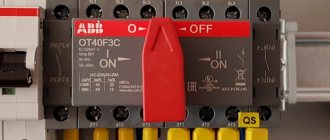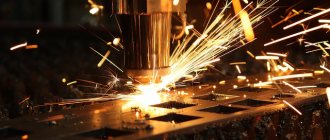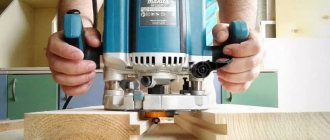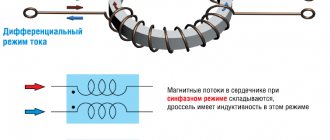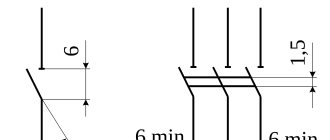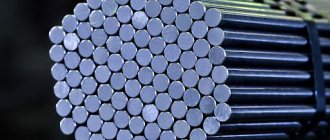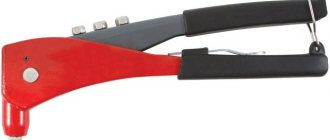Switches and load switches (SBs) are manually operated switching devices that switch on or off a circuit that is under load or has been previously de-energized. Since the function of the load switch is simple (opening the electrical circuit), it does not respond to short circuit currents or overload currents, which is why it differs from a circuit breaker (AB).
The main components of the switch are the power contacts and the spring drive necessary to speed up the release of the contacts. When opening and closing contacts, as is known, a spark or discharge occurs. Physically, this process is simple: an electric arc occurs at the contacts while the voltage is maintained. The power and size of the discharge depends only on the current indicators. Therefore, the switch is, first of all, designed to close (open) a network with high currents and extinguish the electric arc that occurs at the same time.
BUY SWITCH SWITCHES
What is a switch
Electric switch
Products of various designs can be found in the entrances and basements of houses, on the street and in public buildings. In most cases, all types of switches are located in switchboards completely or partially.
According to the classification, an electric switch is part of a distribution mechanism and is designed to open the circuit manually. The product is designed to operate in the range of 100-1000 amperes at a maximum voltage of 1000 volts. The current is interrupted by muscular effort by creating a break in the line.
The changeover switch can be manufactured in open and closed versions. The design depends on the magnitude of the load that is applied to the contacts. This is justified by the fact that the rotary switch at the stage of activation and deactivation creates an arc and a sheaf of sparks, which can cause injury to a person and cause a fire.
The products operate on direct and alternating voltage and can be used for switching single-phase and three-phase current.
380 V switches are used in production and in homes where consumers operating from this voltage are installed. In private homes and cottages, it is common practice to use 220 V two-phase switching devices.
Block switches vertical and horizontal
There is another type of switches where ceramic fuses are used as knives. This allows you to reduce the size of the switching device and combine switching with circuit protection. There are horizontal side-switches, where the fuses are next to each other, and also vertical, where the fuses are located one above the other, see photo below.
Sometimes switches of this type are also called multiblocks, but quite rarely. This design of the switch also provides a visible break. Some models can be switched under load; they have a lever drive installed, which disconnects the contact group with a jerk.
Switch device
The device of the switch
The switch is a simple but well-thought-out device, thanks to which it has become widespread in electrical work.
Switch device:
- Base. Designed for reliable fastening of device components and mechanisms.
- Fixed contacts, rigidly fixed to the base and having terminals for connecting cable wires. They are double plates with elasticity.
- Fixed bracket for fastening a moving element. Made from durable, abrasion-resistant material.
- A movable contact made in the shape of a knife or fork for a consumable insert.
- A handle equipped with an insulating pad at the gripping end.
Depending on the number of directions and poles, a three-phase electric switch has 3 output and 3/6 input contact terminals. The design of the device is designed to firmly hold contacts regardless of their weight and vibration level. All parts through which current is passed are made of a special copper alloy M1. Protection against corrosion is carried out by coating them with tin.
Types of low-voltage load switches
There are more varieties and modifications in this area.
Let's touch on the main ones. 1. Load switch in the form of automatic circuit breakers without releases. They use a full-fledged circuit breaker contact group, housing and arc chutes, but do not have any thermal or electromagnetic releases. The price of such a load switch is less compared to a full-fledged automatic circuit breaker. They are used for operational switching, or installed at the input of distribution panels so that the entire panel or section can be disconnected for repair and maintenance. Their advantages are completely standard fastening, high switching capacity and wear resistance of the contact group.
2. Classic switches of domestic production. The most striking representative of the VR-32 series switches and switches. They are available both in the form of one-way switches and a two-way switch, see photo above on the right. Ratings from 100 to 630 A. They have been produced without much change for more than 30 years. The main advantage is low price. Well suited for boxes with switches, which are used on construction sites for temporary power supply of construction equipment and tools.
3. Molded case switches and switches with front rotary or side handle. Almost all European manufacturers have similar switching devices in their assortment. The ETI brand (Slovenia) has a LBS series, see photo, but many brands have devices similar in appearance and purpose.
This type of switches is also sometimes called switches and changeover switches, although correctly they are load switches and load switches. They have a spring drive, which we mentioned above. When pressing the handle, the operator feels significant resistance, and then the contact group is activated with a clearly audible click. This makes it possible to switch the circuit repeatedly under load without harming the contacts. It is also possible to install a reversing switch on the basis of such devices. In general, for reversing, a pair of contactors is used, which, when switching, change the phase sequence. But you can achieve the same effect of a reversing switch using an electrically driven load switch. Although this opportunity is used extremely rarely. Since load switches are not designed for such high operating frequencies as contactors
1. Switches and switches with electromagnetic drive are a logical continuation of the previous series. Here external control is implemented using an electric motor or an electromagnetic solenoid. This allows switches and switches to be included in automatic control systems. In addition to external control, the electric drive makes it possible to monitor the state of the switch, and also has several additional contacts that can control other equipment.
2. Modular load switches are externally similar to a modular circuit breaker without trip units, and the switches take up more space in terms of the number of modules on the DIN rail and have a rotary handle on the front for switching.
Essentially this is a solution for modular switchboards where rated currents do not exceed 63 A
The difference between a switch and a disconnector
The difference between a switch and a disconnector is the mechanism for de-energizing the line, the distance between the separated ends and the presence of an electric arc.
The 380 V switch is used to disconnect devices that are under load - in the on state. The device makes it possible to carry out any manipulations with electrical equipment without de-energizing the entire residential property. In this case, the distance between the contacts is sufficient to prevent breakdown. The device housing covers the contacts, which prevents the ion arc from reaching adjacent parts or the ground line.
The purpose of the switch is to de-energize the entire facility. The load is first disconnected to prevent the contacts from melting. Emergency disconnection of the line is allowed in the event of an emergency - a fire, a break in the water supply or heating system.
Poles
Switches are single-pole, two-pole, three-pole. This characteristic indicates the number of wires that can be connected to the switch.
A single-pole switch disconnector allows you to connect one power wire and one outgoing wire. An example of such a device is a load switch
SHD201 made by ABB.
Bipolar devices are used where it is necessary to completely disconnect the network from voltage. They are relevant in circuits where a separate switch is provided for a single-phase electrical appliance. In this case, 4 wires are routed to the device - 2 power and 2 outlet. An example is the SHD 200 model produced by ABB.
Three-pole switches are used to protect a 3- or 4-wire network. Up to 6 wires are supplied to the model, of which 3 are phase and 3 are protected. This principle is implemented, for example, in switches SD203 C16 from ABB.
Four-pole devices allow you to connect 8 wires - 4 phase (of which 1 is neutral) and 4 outlets (also with one neutral). For example, like the SD204 C25 models from ABB.
Advantages and disadvantages
Reversing switch ABB OT63F3C 63A
Reversing switch-disconnectors are in demand in all sectors of economic activity.
The popularity of the products is based on the following advantages:
- Durability and reliability. The devices are resistant to mechanical stress and vibration.
- Long service life. High wear resistance of contacts and hinge joints ensures longevity of the devices even with frequent use. The device resource is 3000-5000 shutdowns.
- Safety. There is no risk of electric shock, explosion or fire.
- Minimum maintenance costs. Periodic lubrication of the joint is sufficient.
- Wide operating temperature range.
- Ecological cleanliness. The devices do not emit harmful substances into the environment.
- Compactness. Small dimensions make it possible to install several products in one panel.
- Affordable price.
- Simplicity and speed of installation.
The disadvantages of switches include the high level of switching overvoltage that occurs between the contacts at the moment of the minimum distance between them. This requires the use of effective measures to protect switching points.
Modifications
The first switches were of the changeover type. They were a switch with two positions - on and off. The changeover switch is used for switching a large number of electrical lines. Modifications of the changeover switch appear in modern electrical networks.
Disconnect switch. Such devices are small in size, have a short handle, and are supplied in a protective case. This principle is implemented in the changeover switch-disconnector VR32-31F-V71250-100A manufactured by KEAZ:
Rotary drive switches . Devices with a rotary handle are simple, reliable and have high mechanical strength. Their knives begin to move by turning a lever. These include, for example, the OT25F3 3p 25A switch manufactured by ABB.
Modular switches mounted on a DIN rail . Essentially, this is a switch that serves to protect equipment from overload and short circuit. For example, a modular two-pole switch SHD202 C25 manufactured by ABB.
Reversible switches. Used to switch system power between two independent devices. For example, between a power line and an autonomous power generator. An example of a device is OT100F3C 3p 100A manufactured by ABB.
Using a switch
Reversing switch in the distribution board
Scope of application:
- transformer booths;
- local step-down substations;
- entrance panels in the entrances of houses;
- industrial equipment in workshops;
- warehouses;
- public places;
- offices, offices and other institutions;
- catering establishments;
- private houses, dachas, cottages.
Before installation, a schematic drawing is made, which indicates the line, consumers and switches. You can use a computer program to make a drawing. A single-phase or three-phase switch is located in a panel that prevents access to it by unauthorized persons.
Main types
By marking the switch on the panel you can find out its type, device and potential capabilities.
The following decryption has been established:
- P - switch;
- P - switch;
- P - front connection of wires;
- B - side handle;
- C - central lever;
- numbers - the first (1-3) number of poles, (4-6) current strength (1 - 100 A, 2 - 250 A, 4 - 400 A and 6 - 600 A).
Different types of switches are classified according to the following areas:
- Current strength (100-1000 A).
- Number of poles (1-3).
- Type of current (direct, alternating).
- Control method (side, center).
- Method of connecting wires (front, rear).
- Current directions (1-3).
- The presence of a fuse in the knife.
- Availability of arc extinguishing system.
- Installation of auxiliary contacts.
- Degree of protection (open and closed version).
- Operating temperature (hot, cold, moderate).
When choosing a product, it should be taken into account that only de-energized circuits can be disconnected with devices with a front handle. For lines under load, devices with a side handle are used.
Rated current
Rated current is an indicator that characterizes the parameters of the electrical network with which this switch will work. This characteristic is expressed in amperes and is present in the marking of the device:
- 16A – OT16F3 3p 16A, SHD202 C16 (ABB);
- 20A – VN-32 2P 20A (IEK);
- 25A – OT25F3 3p 25A, SHD202 C25 (ABB), VN-32 2P 25A (IEK);
- 32A – SHD202 C32 (ABB);
- 40A – OT40F3 3p 40A, SHD201 C40 (ABB);
- 50A – SHD201 C50 (ABB);
- 63A – OT63F3 3p 63A, SHD201 C63 (ABB);
- 80A – OT63F3 3p 63A (АВВ);
- 100A – OT100F3C 3p 100A (ABB), 100-IP54-U3-004-Uzola;
- 125A – OT125F3C 3p 125A (АВВ);
- 250A – 250-IP54-UZ-001-Uzola;
- 400A – YaBPVU-400-IP54-U3 (Uzola);
- 630A – YARP-630-IP54-U3-Uzola, VR32-39F-V31250-630A-UHL3 (KEAZ).
